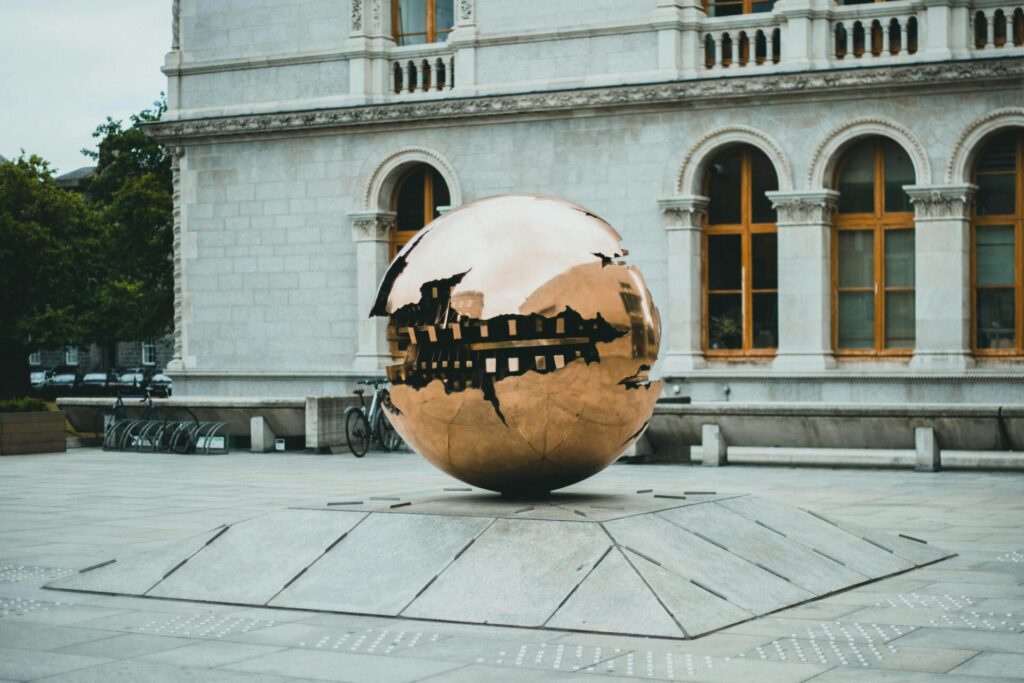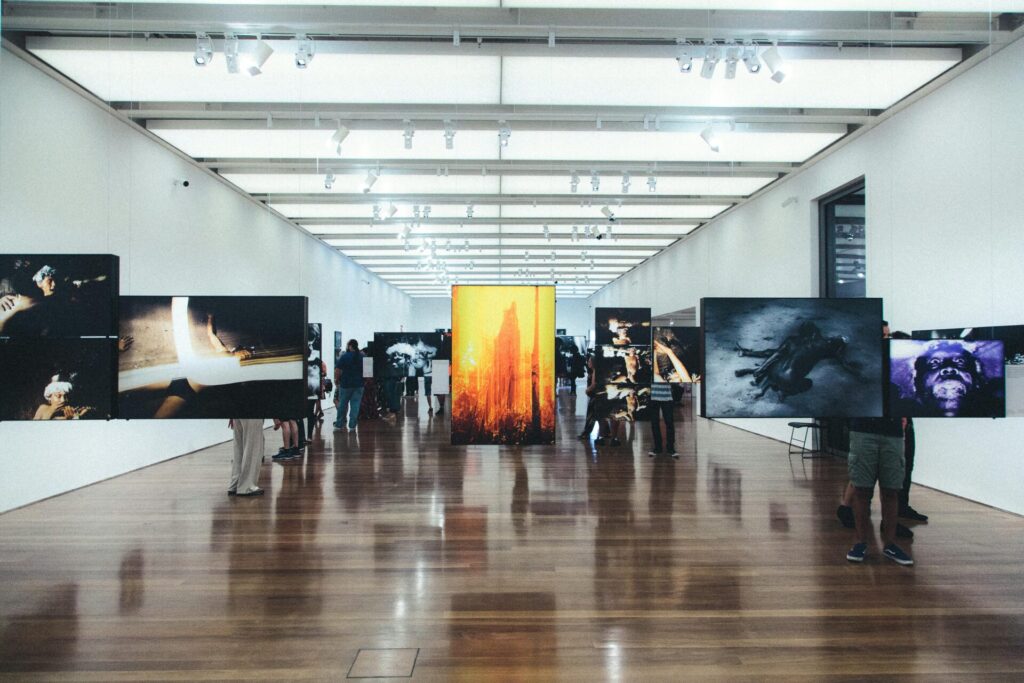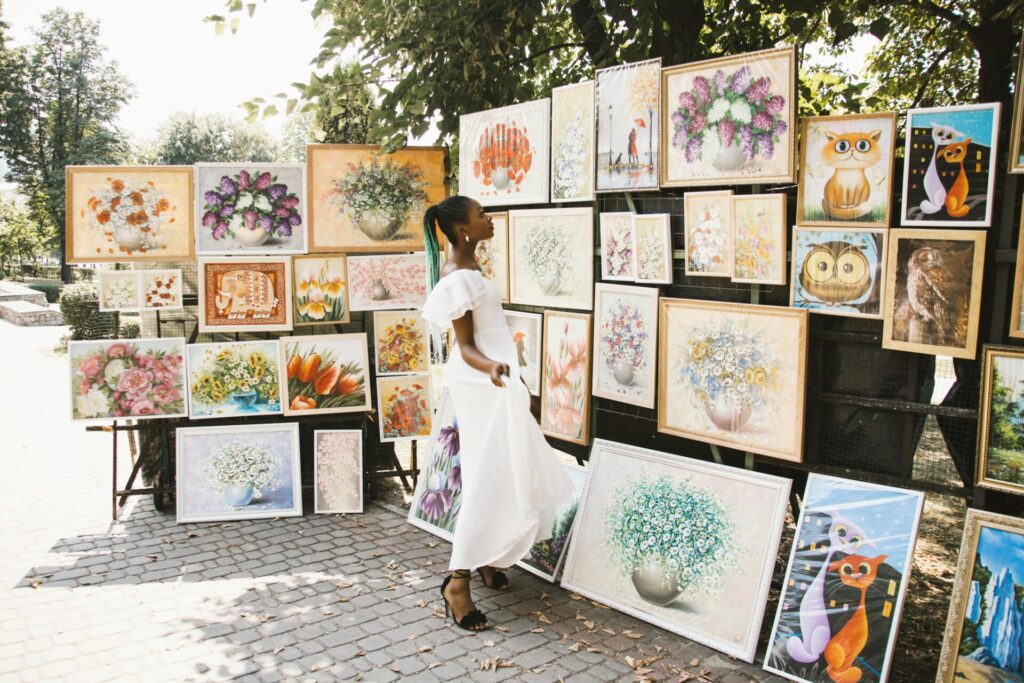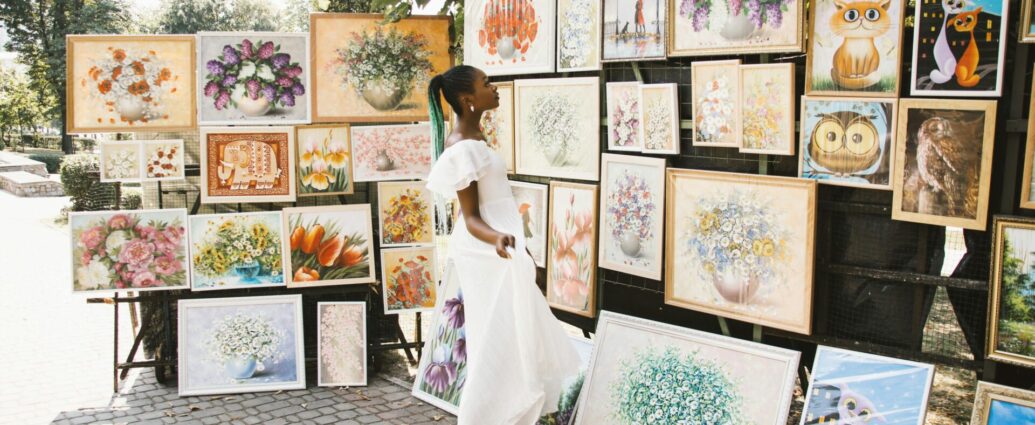Some of the links below may be affiliate links, meaning, at no additional cost to you, I will earn a commission if you click through and make a purchase.
This is an opinion piece about art and its role in everyday life. How can we find and connect with art daily? what does art bring to our lives? and why should it be appreciated as such an integral part of human existence? None of the links shared below are affiliate links. Enjoy the read.
Do people care about the arts anymore? Do those who care about art see it as an integral part of their lives, and an experience worth seeking? What about the next generation? Perceptions of Art, what it is, what it means, and its ultimate purpose are in constant flux.
If there’s one thing Art has always been, it’s a source of observation, commentary, and interpretation. Once out of the artist’s hands, the viewer is free to find, see, and be moved by something always rather personal. And that’s what art brings forward, the unexpected encounter with a deep part of ourselves.

Do People Care About Art?
According to the American Alliance of Museums, 97% of Americans believe museums are educational assets for their communities. Museums partner with schools and offer teachers a way to provide students with immersive and engaging experiences outside the classroom.
However, the site also notes that post-pandemic, attendance numbers keep dwindling. The unprofitable trajectory of major museums is worrisome. It might not be that people don’t care about them, but that they take them for granted. They’ve always been a fixture of our cities, why would that change?
Art galleries play an important role in bringing art to local communities. Yet not everybody can buy a piece of art to decorate a home or add a touch of sophistication to an office. They offer artists opportunities to showcase their work. Many have become community anchors in their own right. Reinventing their spaces, opening them up, and taking art out into the street; the urban canvas.
What about theater and musical performances? These activities were heavily affected and are leveling out after the COVID-19 pandemic restrictions. But even before the pandemic, as a society, it seems we’re leaving the arts behind, as the outdated version of the technology at our fingertips.
We show we care about art when we choose to support these venues and ventures. Being a patron of the arts is not only for the elite few. Visiting museums, exhibitions, theaters, and concerts regularly, and joining their programs sends the message to the institutions that help fund them to keep investing (in us.)

Is Art Worth Seeking?
There is art to be found all over our cities and towns. Architecture can be a great way to start. Well-known or hidden landmarks. They almost always have an interesting story to tell. The urban landscape is an ever-evolving canvas, you just have to look around.
Today, seeking out art does not require much effort on our part. We no longer need to go on a pilgrimage to visit museums or galleries, see their exhibits, or learn about the works they curate. We can stream films, plays, musicals and listen to concerts from the comfort of our homes.
We can walk through the National Gallery, the Met, or the Louvre on our devices. We can let it run in the background while we browse our socials. But be it in person or remotely, art requires something of you. It requires your full attention.
When we seek art, we are engaged in the process. We are active participants. This engagement and participation is rewarding. It’s feeding our minds and souls with new perspectives, questions, and possibilities. Seeking art is an end in itself.

How Can We Make Room for Art in Everyday Life?
Now we’ve come to the question that opened this can of worms, is there room for art in everyday life? or can we go through the motions of our day, our jobs, responsibilities, and to-do lists, and still engage with art in a meaningful way?
I want to point back to the fact that art is already there, very much a part of our lives. Yes, it must compete with the easily digested content at our fingertips. But we have the tools, and most importantly, we have the choice. We can choose to make room for art. Below there are some ideas on how.

1. Room for Art Through Images
Rotate the background in your devices to showcase favorite or curious pieces of art, classic, modern, contemporary, conceptual, or photos of murals, buildings, or architectural features you’ve found online or in walks through your city or town.
2. Room for Art Through Music
Another way to infuse art into your everyday life and routine activities is through music. Create a playlist of a variety of composers. Include classics and contemporary soundtracks from your favorite movies and shows. I always get goosebumps when I listen to the themes of Star Wars, Game of Thrones, and LOTR.
3. Room for Art Through Content
The content we watch can also be a way to access and make room for art. Many empty hours get filled with “junk” content, which is a way to escape and relax. However, as we practice moderation when eating, we should think about what we feed our minds.
Start with the name of an artist or a topic. Look for films and shows that depict a historical period with accuracy or are set in a city you love. Watch for the plot, and characters, and also for the tour of the city that every viewing or episode provides.
Final Thoughts
- People do care about art, they understand it has a purpose, yet the presence of art in the community is taken for granted.
- Art requires something from us. To get something out of the art around us requires active participation. Seeking is its own reward.
- We can infuse our lives with art now more than ever. There’s no need for pilgrimage, or acquiring expensive art. We can join programs, be patrons of local artists, and let art seep into our lives through what we choose to see, listen to, and surround us with; images, music, and content.
Art in all its forms is an experience that awakens something at the core of our humanity. It’s a healing process for the artist, a product of a particular point of view. Yet, it has the power to connect on multiple levels, communicate a myriad of personal messages, and heal others.
Art is not what you see, but what you make others see.
Edgar Degas
As the viewers, the audience, we become an intrinsic part of the experience. And in each of us, it becomes unique. The painting is not just a painting of sorrow but of our sorrow. The performance is not just about loss, but about our losses. All art can be cathartic if we are willing to pause and engage.
Recommended:
- The Importance of Art in Daily Life
- Observing Everyday Life
- Paintings of Everyday Life
- Scenes of Everyday Life
- American Stories (1765-1915)
Go out there today with the spirit of a detective, seek art on your route to work, seek art on the street, look around, and share what you discover with me @cre8tive_confidential














